-
1Intro to MQTT
MQTT (Message Queuing Telemetry Transport) is a protocol proposed by IBM and Eurotech. The introduction in MQTT Official Website:
MQTT is a machine-to-machine (M2M)/”Internet of Things” connectivity protocol. It was designed as an extremely lightweight publish/subscribe messaging transport.We can say MQTT is a protocol designed for IoT. MQTT is based on TCP/IP and transmits/receives data via publish/subscribe.
Please refer to the figure below:
![9-1]()
In the operation of MQTT, there are several roles:- Publisher: Usually publishers are the devices equipped with sensors (ex. Ameba). Publishers uploads the data of the sensors to MQTT-Broker, which serves as a database with MQTT service.
- Subscriber: Subscribers are referred to the devices which receive and observe messages, such as a laptop or a mobile phone.
- Topic: Topic is used to categorized the messages, for example the topic of a message can be “PM2.5” or “Temperature”. Subscribers can choose messages of which topics they want to receive.
-
2Code Update
Open the MQTT example “File” -> “Examples” -> “AmebaMQTTClient” -> “MQTT_Basic”
![9-2]()
Please modify some WiFi-related parameters.
And some information related to MQTT:
![9-3]()
The “mqttServer” refers to the MQTT-Broker, we use the free MQTT sandbox “test.mosquitto.org” for testing.
“clientId” is an identifier for MQTT-Broker to identify the connected device.
“publishTopic” is the topic of the published message, we use “outTopic” in the example. The devices subscribe to “outTopic” will receive the message.
“publishPayload” is the content to be published.
“subscribeTopic” is to tell MQTT-broker which topic we want to subscribe to.
-
3Upload and Execution
Next, compile the code and upload it to Ameba. Press the reset button, then open the serial monitor
![9-4]()
After Ameba is connected to MQTT server, it sends the message “hello world” to “outTopic”.
-
4Connect MQTT client
To see the message, we need another MQTT client.
Here we use a chrome plugin “MQTTLens” to be the MQTT client. You can find it in google webstore.
![9-5]()
Install and open the MQTTLens, click “+” next to “Connection” on the left, and fill in the required information
- Connection Name: Used to identify the connection, you can choose a name you like.
- Hostname: The MQTT-Broker server, here we use “iot.eclipse.org”
- Client ID: We use the default randomly generated ID.
Then click “CREATE CONNECTION”.
![9-6]()
Since we have not registered the topic we want to listen to, we would not receive any messages now.
Fill in “outTopic” in the “Topic” field and click “Subscribe”.
Wait for Ameba to send next message (or you can press the reset button). Then you can see the “hello world” message show up.
![9-7]()
Ameba Arduino: Use MQTT to Upload & Listen to Data
In this example, we connect Ameba to MQTT-Broker. Then send messages as publisher and receive messages from MQTT-Broker as subscriber.
 HYuiii
HYuiii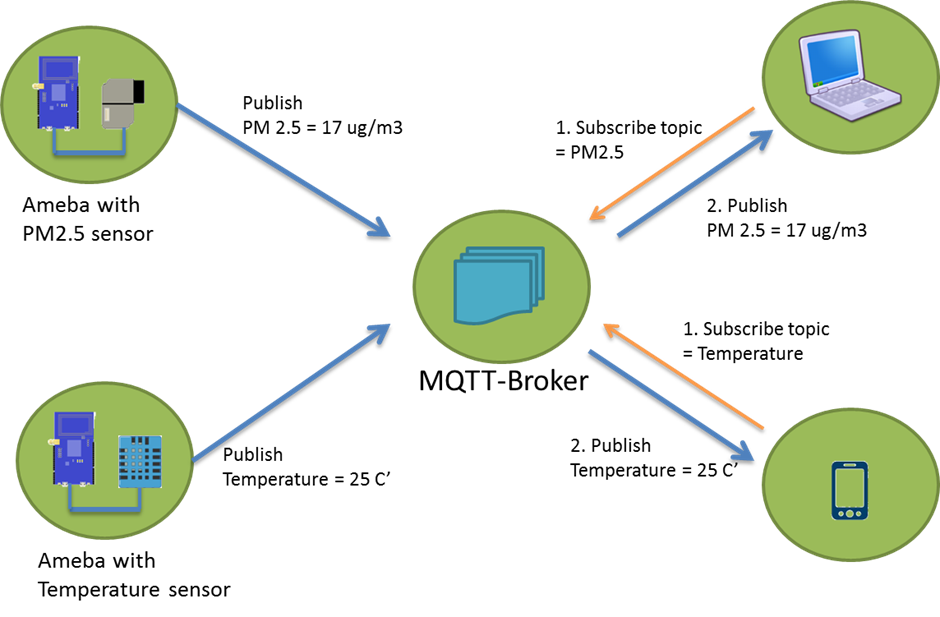
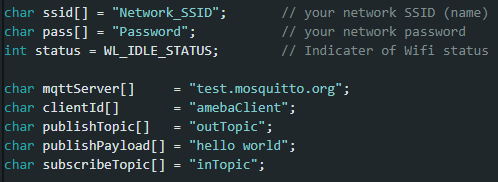

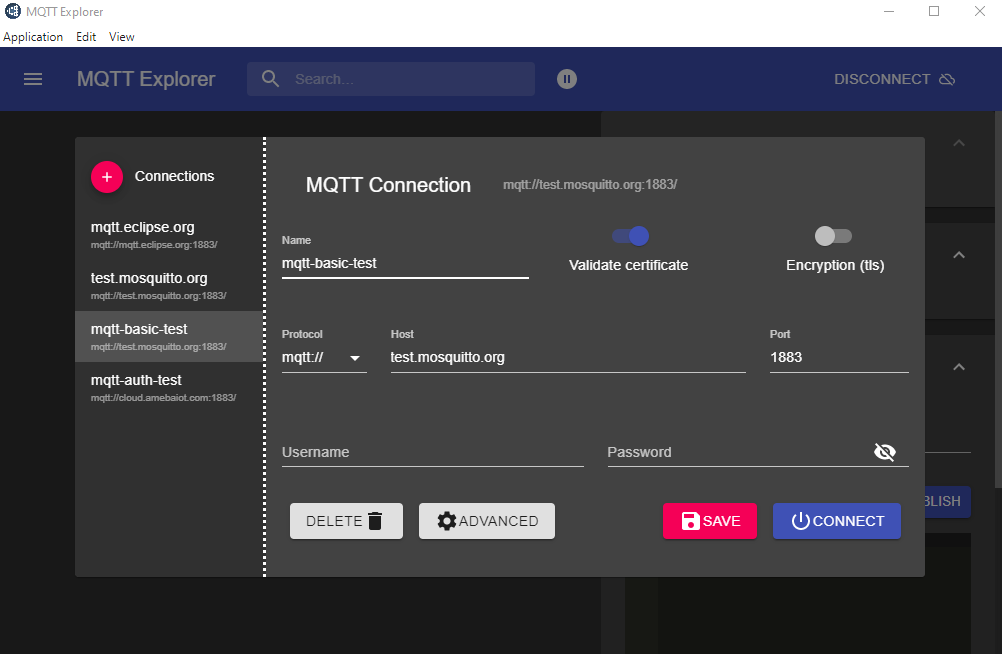
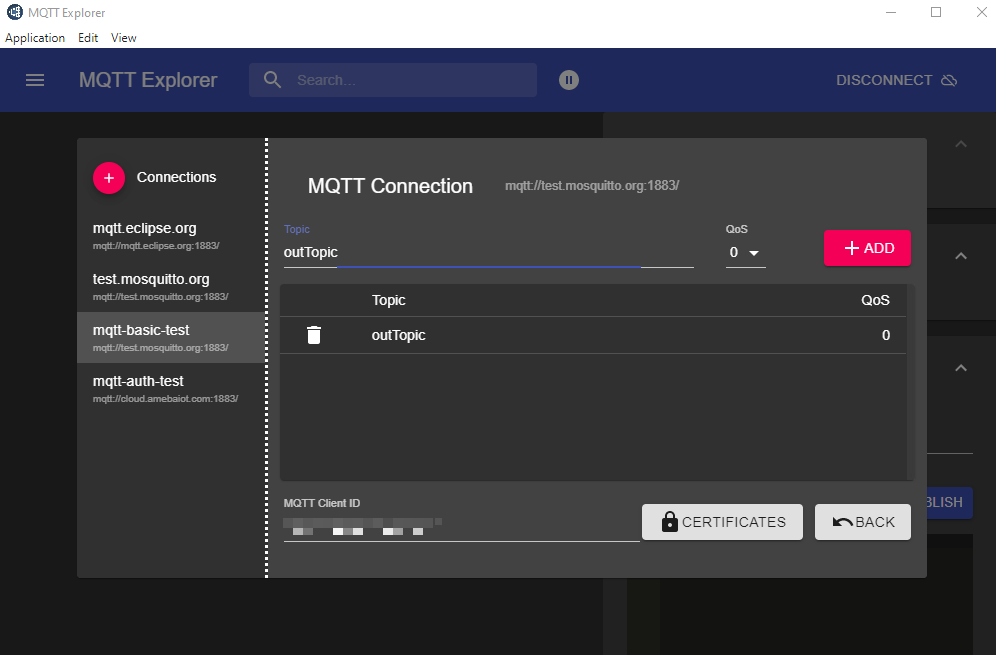
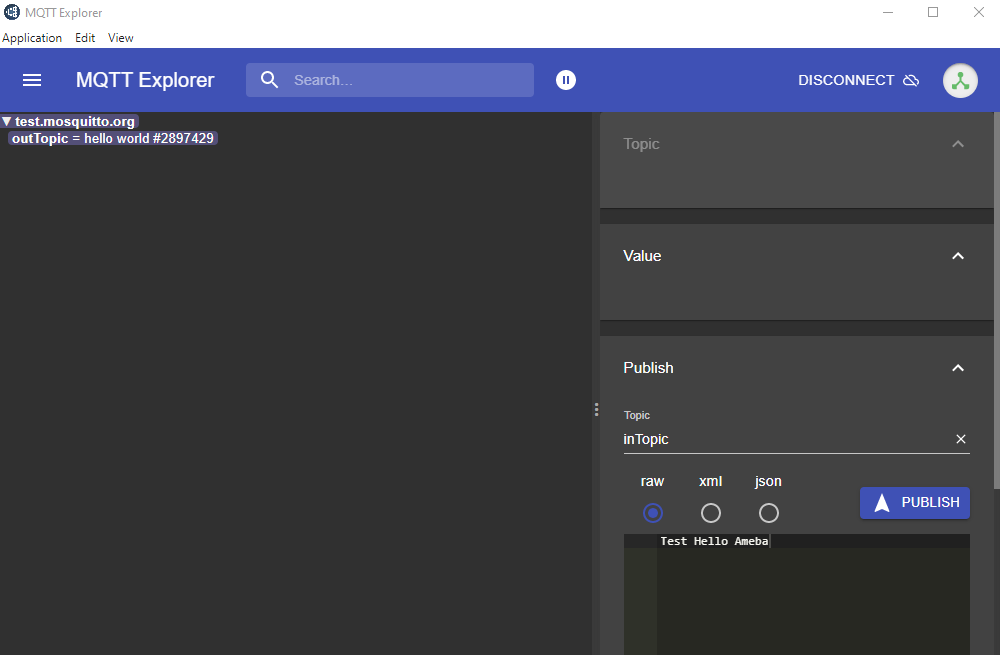

Discussions
Become a Hackaday.io Member
Create an account to leave a comment. Already have an account? Log In.